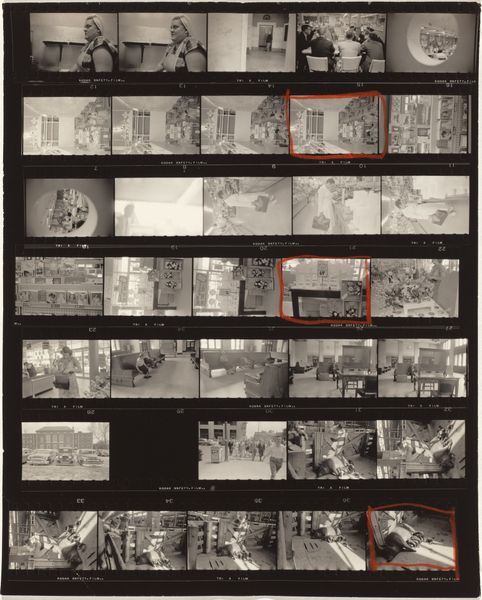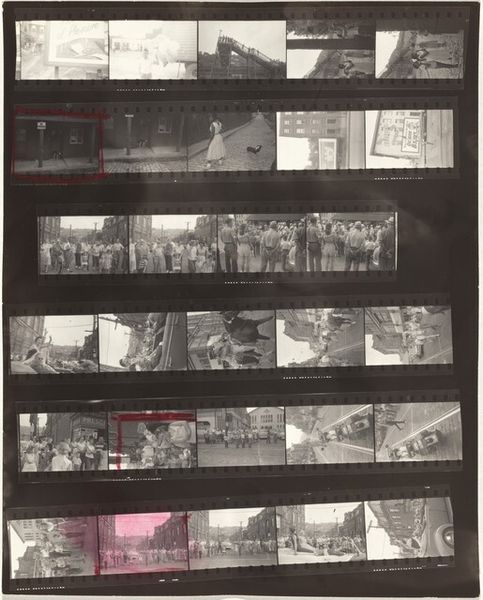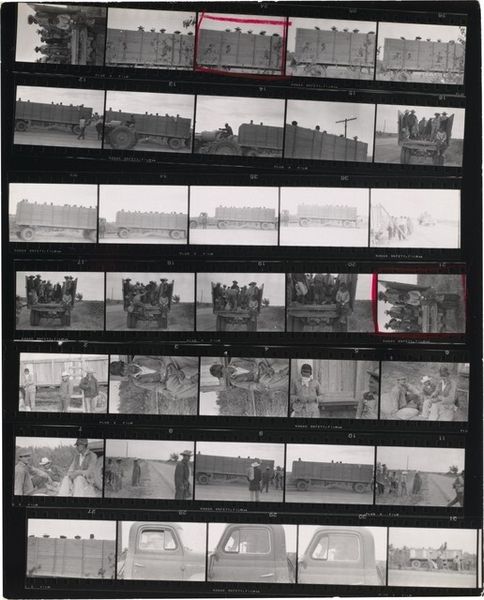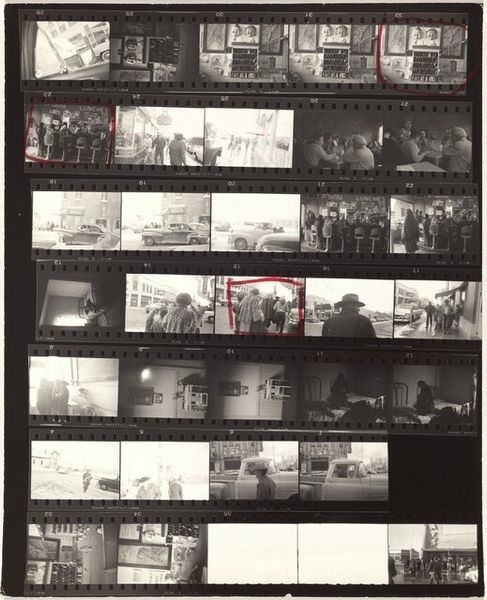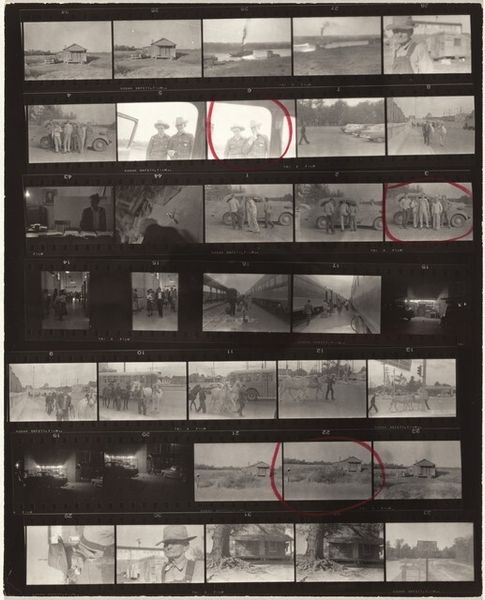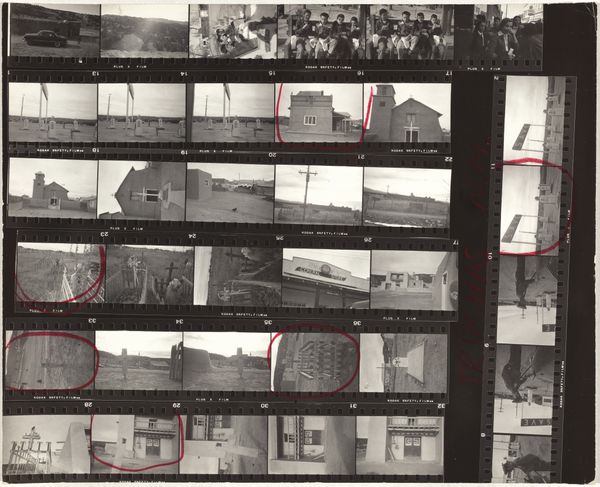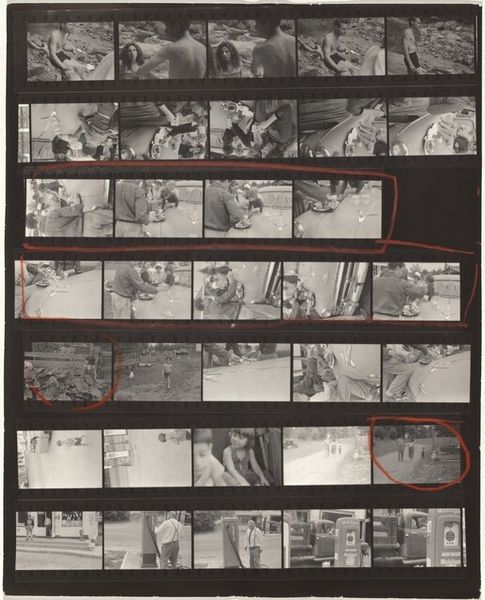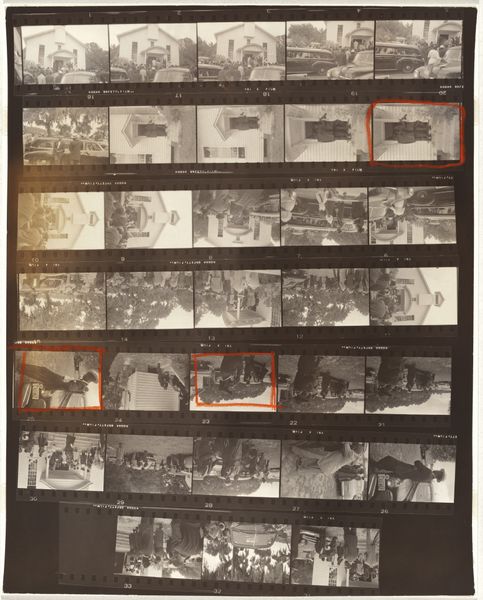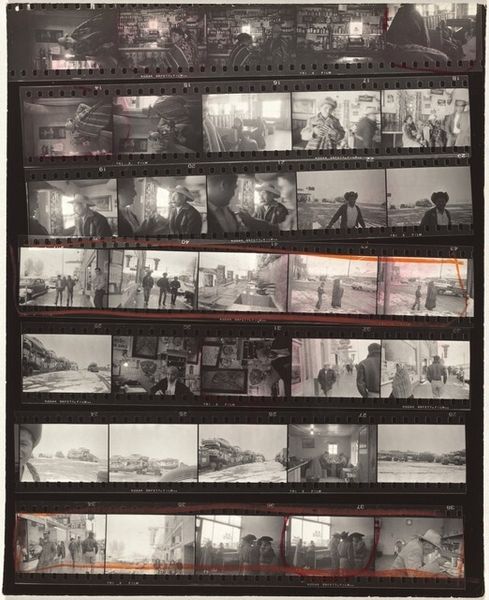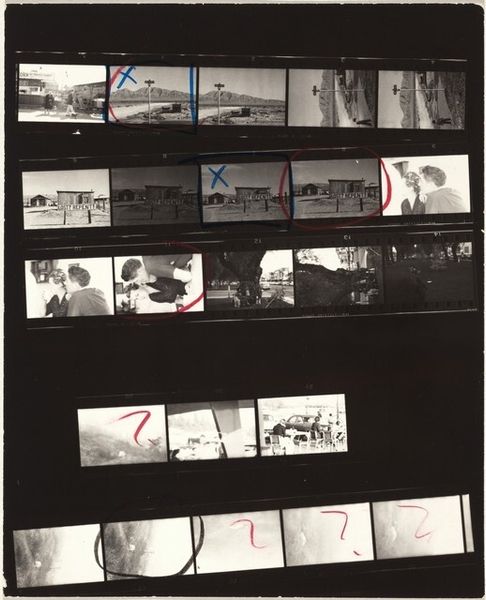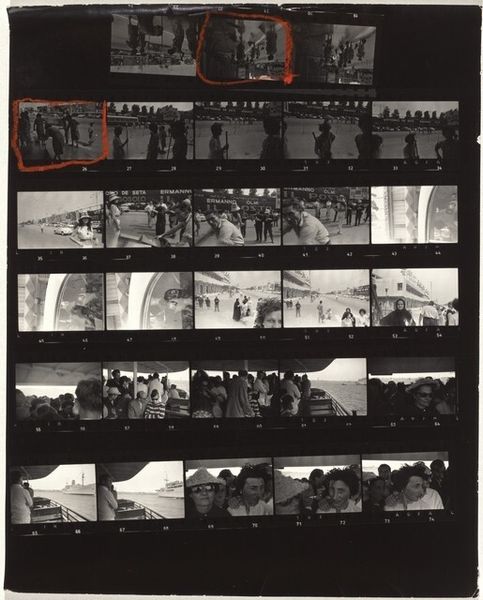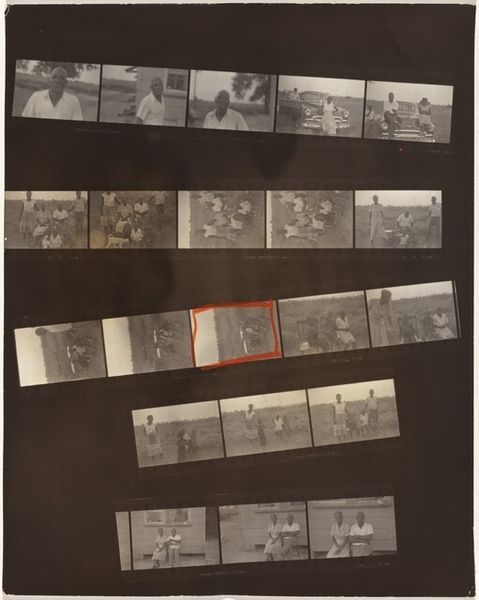
Guggenheim 371/Americans 35--U.S. 66, between Winslow and Flagstaff, Arizona c. 1955
0:00
0:00
Dimensions: overall: 25.4 x 20.5 cm (10 x 8 1/16 in.)
Copyright: National Gallery of Art: CC0 1.0
Curator: Looking at this contact sheet, titled "Guggenheim 371/Americans 35--U.S. 66, between Winslow and Flagstaff, Arizona" by Robert Frank, made around 1955. These are gelatin silver prints—raw moments captured during his cross-country travels. What's your first reaction? Editor: My initial feeling is one of voyeurism and distance. We're presented with these sequential images—almost like frames from a movie reel. The rough and casual finish speaks to the kind of detachment and maybe even indifference towards his subject, while still inviting curiosity from us, the viewers. Curator: Precisely. Frank's work is incredibly significant within the sociopolitical landscape of the 1950s in the US. His perspective wasn’t celebratory or glorifying. Instead, he exposes the starkness of life for marginalized communities, offering what many see as an indictment of American exceptionalism and systemic inequalities during the Cold War. Editor: The landscape and roadside setting seems to hint at an American Dream that feels far from realized. People milling around next to broken-down cars, isolated and worn, in these sequential captures along Route 66 – is there a commentary there about the promises versus the lived reality of freedom on the open road? Curator: Definitely, the work pushes the boundaries of what photography was capable of expressing about the cultural complexities during that period. He faced enormous criticism and censorship but he wanted to question ideas of progress and expose tensions under the surface of society in America. His photography had a lasting impact, even sparking influence to different artistic mediums, like cinema, particularly through its aesthetic rawness and subjective storytelling. Editor: I suppose it is these unfiltered stories that allow this contact sheet to engage critical perspectives that consider the American Dream and those that found it broken on arrival, metaphorically speaking. This art invites questioning about themes such as inequality and displacement. Curator: It’s a piece that demands continued exploration; the conversation is just as relevant today as it was decades ago. Editor: Exactly, it encourages us to interrogate our own perspectives on whose stories get told, and how we critically engage with art that carries a significant cultural weight.
Comments
No comments
Be the first to comment and join the conversation on the ultimate creative platform.
